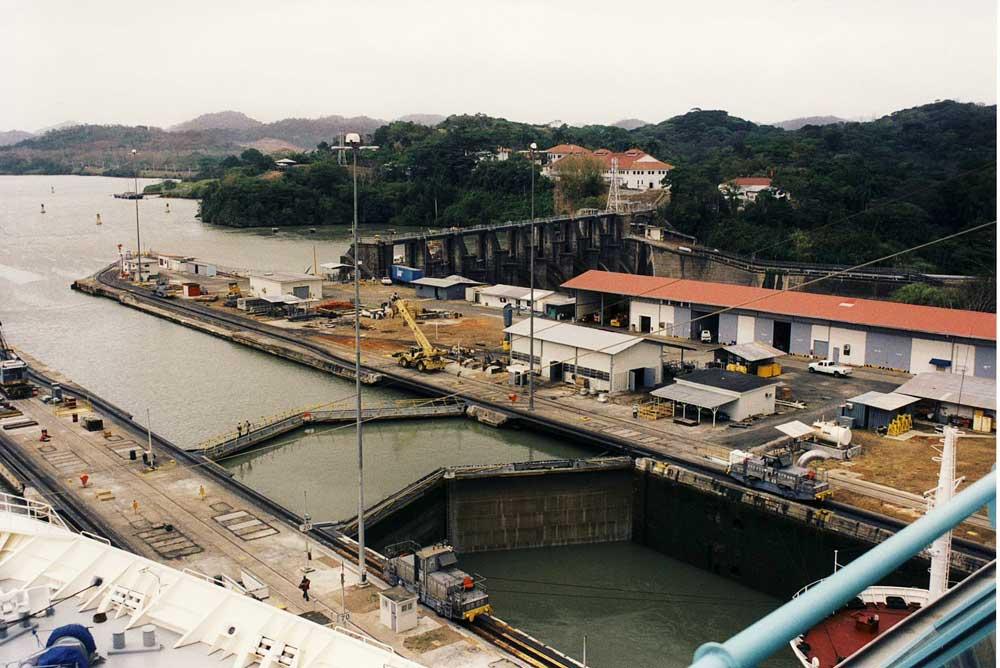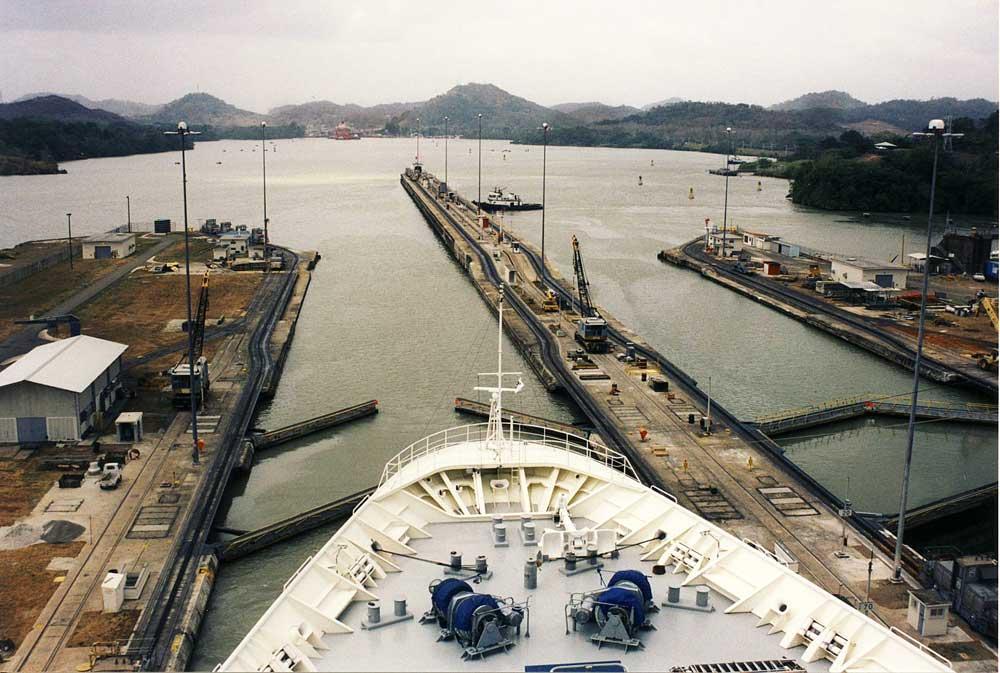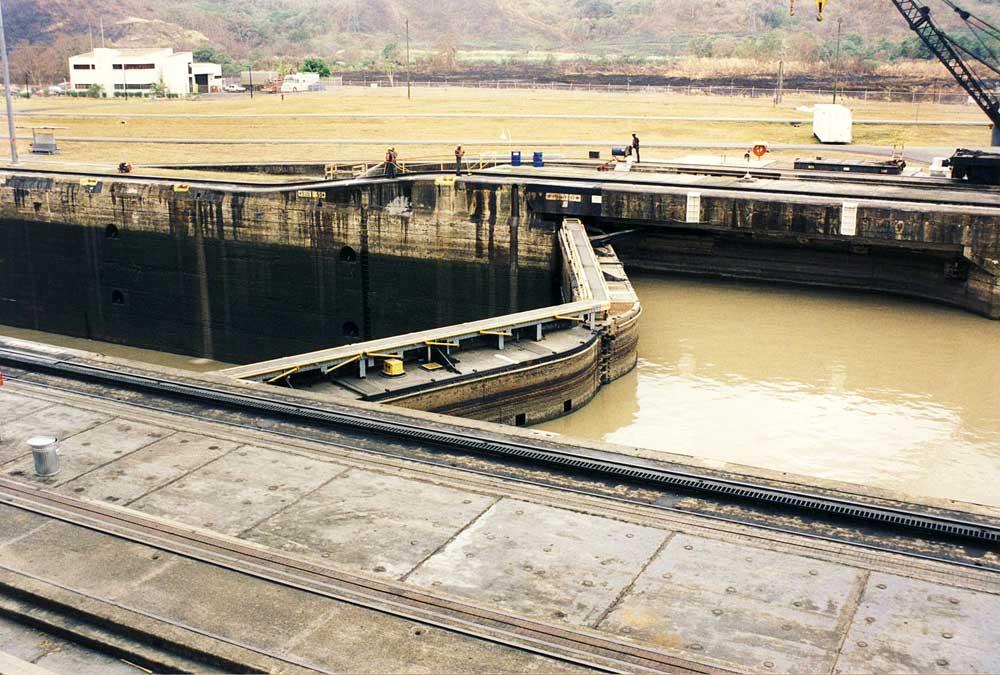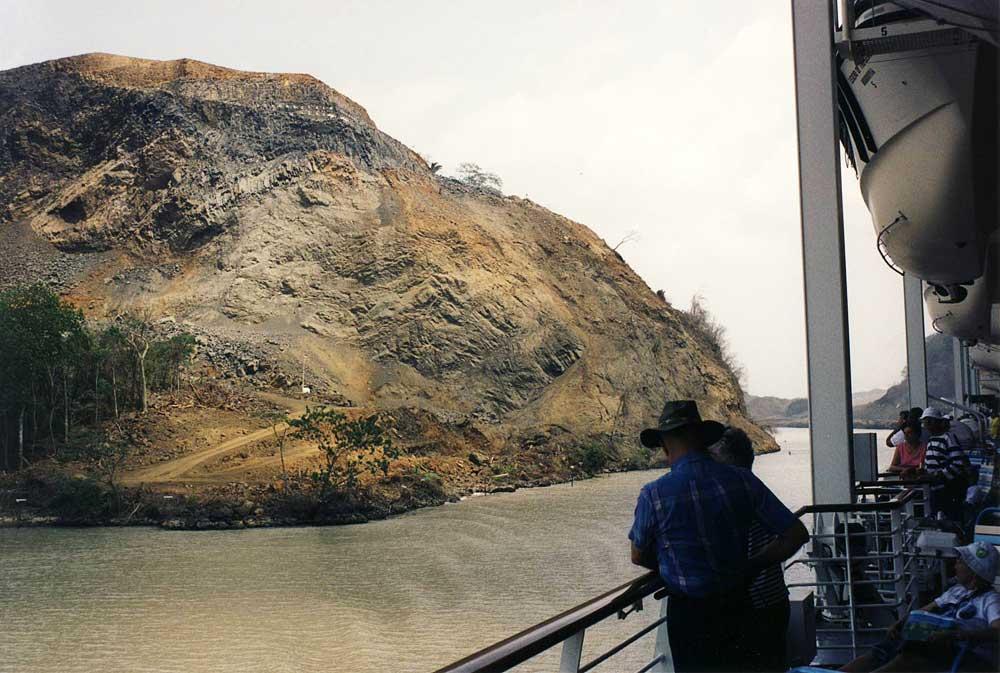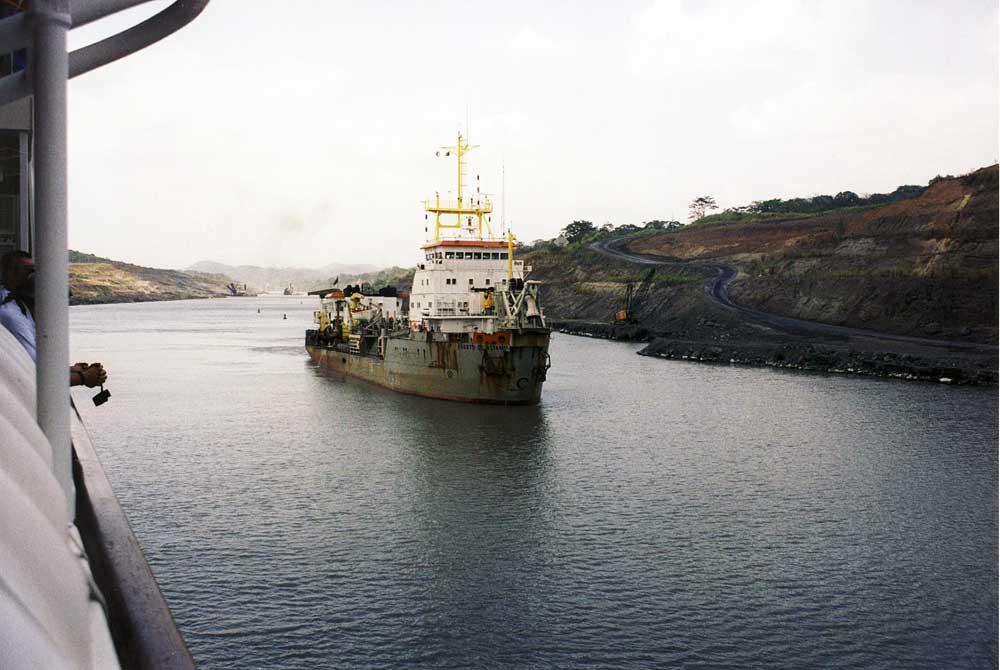| I spent most of the day moving around the ship to different observation points, taking as many photos as I could. We were elevated by the Miraflores Locks to the level of Miraflores Lake which is one mile in length. We then entered the Pedro Miguel Locks and were elevated to the level of the Culebra or Gaillard Cut and Gatun Lake. From here the ship entered the Cut which is the most amazing aspect of the Canal's construction. For it was here that millions of tons of rock and dirt had to be dug and removed to create a channel for ships to literally sail through the mountains. What had been mountainous jungle is now a quiet channel through the Continental Divide. Smaller boats were observed sailing by and dredging equipment on the side of the channel were seen digging to widen the channel and clear up any continued landslides, many of which caused great difficulties in the construction and early years of the Canal. As we sailed through the Cut, people ashore, on boats, or other workers waved and blew their horns. But overall, it was a very quiet and peaceful ride. In fact, the entire transit of the Canal was quiet and serene. | |

